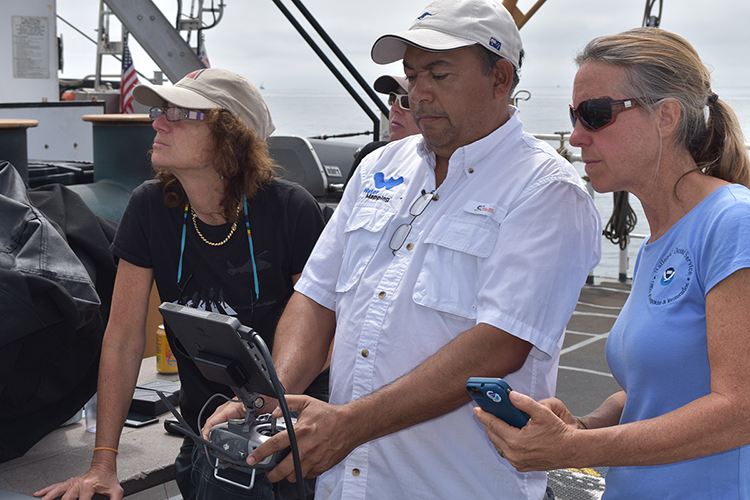OR&R Scientists Collaborate with Partners to Test New Tools and Methods for Characterizing Oil Following a Spill
SEPT. 3, 2019 — Last week, scientists from NOAA’s Office of Response and Restoration, in collaboration with an interdisciplinary and interagency team of researchers and oil spill responders, tested new tools and methods for characterizing oil slicks and oil in the water column following an oil spill.

Field trials are being conducted in the vicinity of the natural oil seeps in the vicinity of Platform Holly, near Santa Barbara, California. The field trials are taking place aboard the U.S. Coast Guard Buoy Tender George Cobb. The field experiments include testing oil spill detection REMUS (Remote Environmental Monitoring Units) Autonomous Underwater Vehicles (AUVs) equipped with sensors and samplers capable of characterizing oil in the water column, including underneath an oil slick; and development and implementation of near real time data upload into a common operating picture, the Environmental Response Management Application (ERMA), for operational decision-making.
The vehicles were developed under a collaborative, multiagency NOAA project funded by the Bureau of Safety and Environmental Enforcement (BSEE) and includes collaboration from the Coastal Response Research Center (CRRC), the U.S. Coast Guard, the Environmental Protection Agency, Woods Hole Oceanographic Institution (WHOI), Arctic Domain Awareness Center (ADAC), Water Mapping LLC and Abt Associates.
For more information contact, Lisa.DiPinto@noaa.gov or George.Graettinger@noaa.gov.
